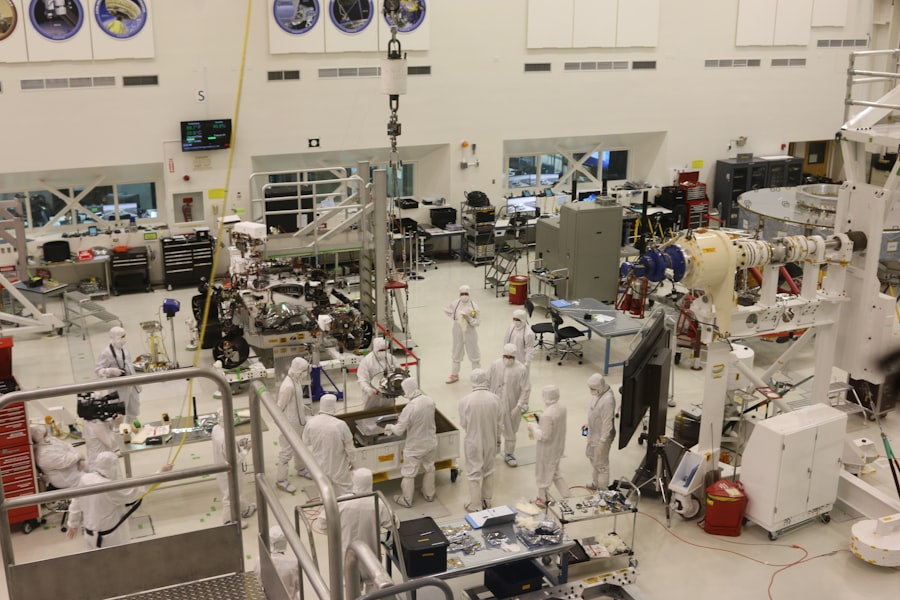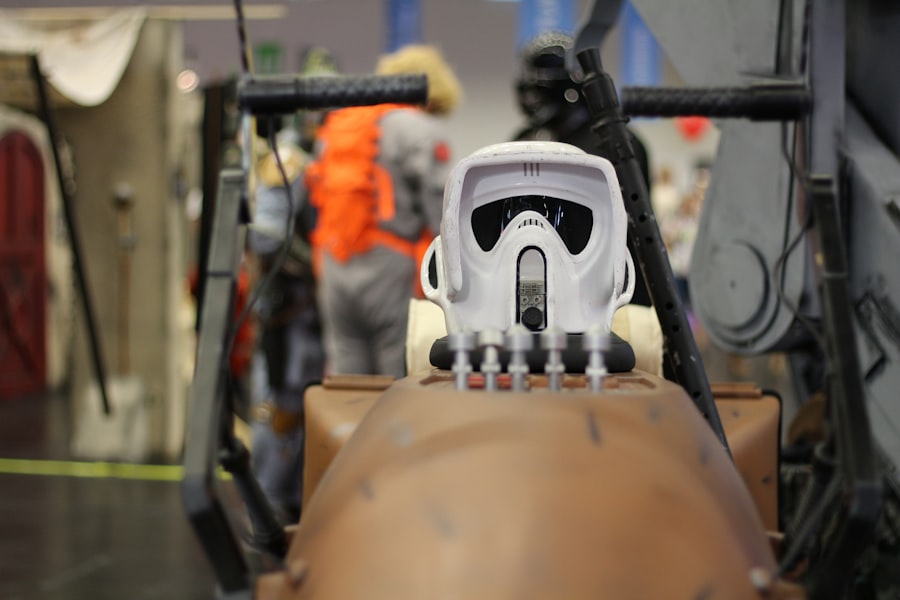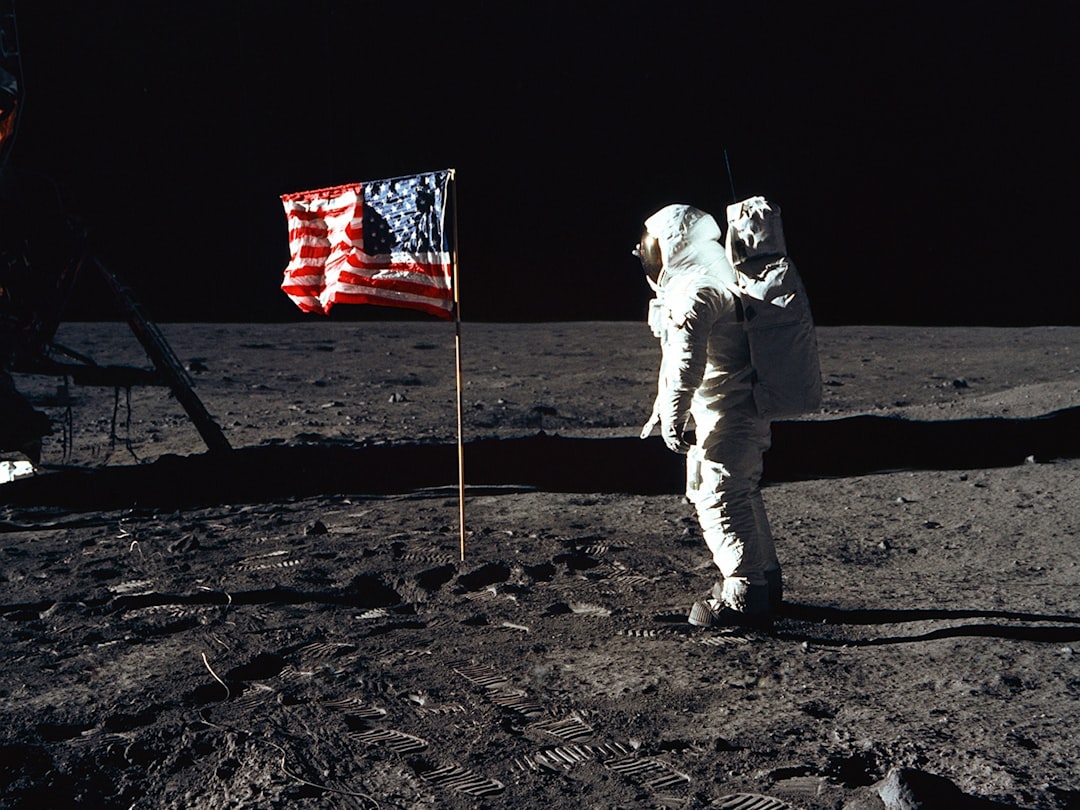The origins of the Space Race can be traced back to the aftermath of World War II, a period marked by intense geopolitical rivalry between the United States and the Soviet Union. As both nations emerged as superpowers, they sought to demonstrate their technological prowess and ideological superiority. The launch of Sputnik 1 by the Soviet Union on October 4, 1957, marked a pivotal moment in this competition.
This was not merely a satellite; it was a symbol of Soviet scientific achievement and a stark reminder to the United States of its vulnerabilities. The successful launch of Sputnik ignited fears in America about falling behind in technological advancements, leading to a surge in interest and investment in science and education. In response to the Soviet Union’s early lead in space exploration, the United States established the National Aeronautics and Space Administration (NASA) in 1958.
This agency was tasked with coordinating the nation’s efforts in space exploration and research. The Space Race was not just about reaching outer space; it was a reflection of the broader ideological battle between capitalism and communism. Each successful mission became a point of national pride, fueling public interest and government funding.
The race to the moon, which would culminate in the Apollo 11 mission in 1969, became a defining moment in this rivalry, showcasing not only technological capabilities but also the spirit of human exploration.
Key Takeaways
- The Space Race originated from the competition between the United States and the Soviet Union during the Cold War, with both countries aiming to demonstrate their technological and ideological superiority.
- The Space Race led to significant technological advancements in areas such as rocket propulsion, satellite technology, and human spaceflight, paving the way for future space exploration.
- The political and cultural impact of the Space Race was profound, as it fueled national pride, inspired scientific innovation, and contributed to the development of international space cooperation.
- The future of space exploration holds great potential for scientific discovery, economic development, and the expansion of human presence beyond Earth.
- The emergence of space war and the militarization of space raise concerns about the implications of potential conflicts in outer space, highlighting the need for international cooperation and the involvement of private companies in space exploration.
The Cold War and the Space Race
The Cold War served as the backdrop for the Space Race, influencing its trajectory and significance. This period was characterized by political tension, military standoffs, and an arms race that extended beyond Earth’s atmosphere. The competition for supremacy in space was intertwined with national security concerns; both superpowers recognized that advancements in space technology could translate into military advantages.
The development of intercontinental ballistic missiles (ICBMs) was closely linked to rocket technology used for space exploration, blurring the lines between scientific progress and military capability. As the Cold War intensified, so did the stakes of the Space Race. Each successful launch or mission was met with heightened scrutiny and propaganda efforts from both sides.
The United States and the Soviet Union engaged in a series of high-profile missions that captured global attention, from Yuri Gagarin’s historic flight as the first human in space in 1961 to the Apollo missions that aimed to land humans on the moon. These events were not merely scientific achievements; they were powerful tools for political messaging, showcasing each nation’s technological superiority and commitment to progress.
The Technological Advancements of the Space Race

The Space Race catalyzed remarkable technological advancements that have had lasting impacts on various fields. The urgency to outpace one another led to rapid developments in rocketry, satellite technology, and computer systems. Innovations such as miniaturization of electronics, advancements in materials science, and improvements in telecommunications emerged as direct results of this competitive environment.
The need for reliable launch vehicles resulted in breakthroughs that would later benefit commercial aviation and other industries. Moreover, the Space Race spurred significant investments in education and research institutions. Universities across the United States and the Soviet Union expanded their programs in engineering, physics, and mathematics to cultivate a new generation of scientists and engineers.
This focus on STEM (science, technology, engineering, and mathematics) education laid the groundwork for future innovations beyond space exploration. The technologies developed during this era have since permeated everyday life, from satellite communications to GPS navigation systems, illustrating how competition can drive progress that benefits society as a whole.
The Political and Cultural Impact of the Space Race
| Aspect | Impact |
|---|---|
| Technological Advancements | Development of new technologies such as satellite communication, GPS, and medical imaging |
| Global Competition | Heightened competition between the US and the Soviet Union, leading to increased tensions |
| National Prestige | Space achievements became a symbol of national pride and power |
| Cultural Influence | Inspired a generation of scientists, engineers, and astronauts |
| Political Policies | Increased government funding for science and technology research |
The political ramifications of the Space Race were profound, shaping international relations and domestic policies for decades. In the United States, the success of NASA’s Apollo program became a source of national pride and unity during a tumultuous period marked by civil rights movements and anti-war protests. The moon landing was celebrated not only as a scientific achievement but also as a demonstration of American ingenuity and resilience.
It provided a momentary distraction from domestic issues and fostered a sense of collective achievement among Americans. Culturally, the Space Race inspired a generation of dreamers and innovators. It permeated popular culture through films, literature, and art, igniting imaginations about what lay beyond Earth’s atmosphere.
Science fiction became a prominent genre, reflecting society’s fascination with space exploration and its potential consequences. The imagery of astronauts and spacecraft became iconic symbols of human aspiration, representing both hope for future discoveries and cautionary tales about technological hubris. This cultural shift laid the foundation for ongoing interest in space exploration that continues to resonate today.
The Future of Space Exploration
As humanity stands on the brink of a new era in space exploration, the future appears both promising and complex. With advancements in technology and an increasing understanding of our solar system, missions to Mars and beyond are no longer distant dreams but tangible goals. NASA’s Artemis program aims to return humans to the moon by 2024, serving as a stepping stone for future manned missions to Mars.
Additionally, international collaborations are emerging as key players recognize that exploring deep space requires shared resources and expertise. The future also holds potential for commercial ventures in space exploration. Private companies like SpaceX and Blue Origin are revolutionizing access to space through innovative technologies and reduced costs.
These developments could democratize space travel, making it accessible not only to astronauts but also to civilians. As humanity looks toward establishing a presence on other celestial bodies, ethical considerations regarding planetary protection and resource utilization will become increasingly important. Balancing exploration with responsibility will be crucial as society navigates this new frontier.
The Emergence of Space War

As nations continue to invest heavily in space capabilities, concerns about potential conflicts in outer space have emerged. The concept of space war is no longer confined to science fiction; it has become a topic of serious discussion among policymakers and military strategists. With satellites playing critical roles in communication, navigation, and surveillance, they have become strategic assets that nations are keen to protect or potentially target during conflicts.
The emergence of anti-satellite weapons has raised alarms about the militarization of space. Nations are developing technologies that could disable or destroy enemy satellites, leading to fears of an arms race beyond Earth’s atmosphere. Such developments could have catastrophic consequences not only for military operations but also for civilian infrastructure reliant on satellite technology.
As countries grapple with these challenges, establishing norms and agreements governing behavior in space will be essential to prevent escalation into conflict.
The Militarization of Space
The militarization of space represents a significant shift in how nations perceive their interests beyond Earth’s atmosphere. Historically viewed as a domain for scientific exploration and international cooperation, space is increasingly seen through a lens of national security. Countries are investing in advanced technologies designed for defense purposes, including missile defense systems that rely on satellite networks for tracking and targeting.
This militarization raises ethical questions about the future of space exploration. As nations prioritize military capabilities over collaborative efforts for peaceful exploration, there is a risk that space could become another arena for geopolitical competition rather than a platform for shared human achievement. The challenge lies in finding a balance between national security interests and maintaining an open environment for scientific discovery that benefits all humanity.
The Implications of Space War
The implications of potential conflicts in space are profound and far-reaching. A war fought in outer space could disrupt global communications, navigation systems, and weather forecasting—services that billions rely on daily. The destruction of satellites could lead to cascading failures across various sectors, including finance, transportation, and emergency services.
Such disruptions would not only impact military operations but also have dire consequences for civilian life. Moreover, engaging in warfare in space could set dangerous precedents for international relations. It could lead to an escalation of tensions among nations as they seek to protect their interests or retaliate against perceived threats.
The potential for collateral damage extends beyond immediate military objectives; it could hinder future collaborative efforts in space exploration that are essential for addressing global challenges such as climate change or resource scarcity.
International Cooperation in Space Exploration
Despite the challenges posed by militarization and competition, international cooperation remains vital for advancing space exploration. Collaborative projects like the International Space Station (ISS) exemplify how nations can work together toward common goals despite political differences. The ISS has been a platform for scientific research and technological development while fostering goodwill among participating countries.
As humanity looks toward ambitious goals such as Mars colonization or asteroid mining, cooperation will be essential to pool resources and expertise. Establishing frameworks for joint missions can help mitigate risks associated with competition while promoting peaceful uses of outer space. International treaties governing activities in space can provide guidelines for responsible behavior among nations, ensuring that exploration remains focused on benefiting all humankind rather than becoming a battleground.
The Role of Private Companies in Space Exploration
The rise of private companies has transformed the landscape of space exploration significantly over recent years. Companies like SpaceX have demonstrated that commercial entities can achieve remarkable feats previously thought possible only by government agencies. By reducing costs through innovative technologies such as reusable rockets, these companies are making space more accessible than ever before.
Private companies are not only launching satellites but also developing plans for crewed missions to Mars and lunar bases. Their involvement has sparked renewed interest in space travel among investors and entrepreneurs alike, leading to an influx of funding for new ventures focused on exploration and tourism. However, this shift raises questions about regulation and oversight—ensuring that commercial activities align with broader goals for responsible exploration while safeguarding against potential conflicts arising from competing interests.
Balancing Competition and Collaboration in Space Exploration
As humanity ventures further into space, finding a balance between competition and collaboration will be crucial for sustainable exploration efforts.
Establishing clear guidelines governing behavior in outer space is imperative to foster an environment conducive to collaboration among nations and private entities alike.
Encouraging partnerships on scientific missions can help build trust while promoting shared benefits derived from discoveries made beyond Earth’s atmosphere. Ultimately, navigating this delicate balance will determine whether humanity can harness its collective potential for peaceful exploration or succumb to divisive rivalries that threaten our shared future among the stars.
The distinction between the space race and space war is a topic of significant interest, as it highlights the evolution of human endeavors in outer space from peaceful exploration to potential militarization. The space race, primarily between the United States and the Soviet Union during the Cold War, was characterized by a quest for technological and exploratory supremacy, leading to monumental achievements like the moon landing. In contrast, space war refers to the militarization and potential conflict in space, involving the development of weapons and defense systems.
